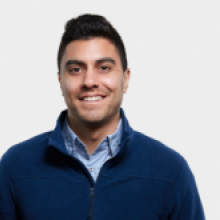
Alec joined Tipping in 2016, and is always up for a challenge. Throughout his time at Tipping, Alec has been honing his skills in thoughtful and simple design solutions to complex engineering problems. Building off of this passion for targeted solutions, Alec has been involved in Tipping’s advanced analytics team, developing seismic analysis and modeling for complex projects. For the UC Berkeley International House project, Alec and the team employed nonlinear response history analysis to develop a targeted retrofit scheme that addressed deficiencies while strengthening a historically significant 1929 structure including a prominent tower rotunda. Alec has continued to sharpen his skills on projects utilizing concrete, steel, and wood construction, and the retrofit of existing structures. He enjoys working on structural designs that employ multiple materials. Alec has a special talent for developing eye-catching three dimensional renderings of our designs to convey concepts and showcase layouts, materials, construction sequencing, and sense of scale. These images have been an important asset to our marketing, business development team, and for educational purposes.
Tipping is a structural engineering firm based in Berkeley, California that specializes in the seismic design and retrofit of new and existing residential, commercial, and educational buildings. Our firm was founded in 1983 by Steve Tipping who instilled an approach of curiosity and innovation into the firm that carries on his legacy.
In 2016, Tipping expanded its office space by developing a new building in a neighboring lot. Since the structure would be designed by the very engineering firm who would inhabit it for years to come, there was a desire for the building to also serve as a testament to seismic resilience, innovative design and integrated value in the built world. To achieve this vision, the building is stood up on six columns, each fitted with an exposed isolation bearing to protect the upper floors from violent ground accelerations associated with a substantial earthquake. These unique structural components are visible from the adjacent street and within the pub that occupies the building’s ground level, and while they may primarily serve a structural purpose, they also attract the occasional passerby’s curiosity and intrigue of our profession—just as Steve had hoped they would.
Our firm has also developed innovative tools to improve the efficiency, thoroughness and transparency of our engineering services. One of these tools is a software program called “Sketchulation,” which has been developed by one of our principals, Mike Korolyk. Mike developed this program out of an interest in combining calculations with a sketching interface, hence the program’s name. Sketchulation has become a go-to tool for our engineers since Mike first distributed it to our engineers and we’re excited to share it with university faculty and students alike.
